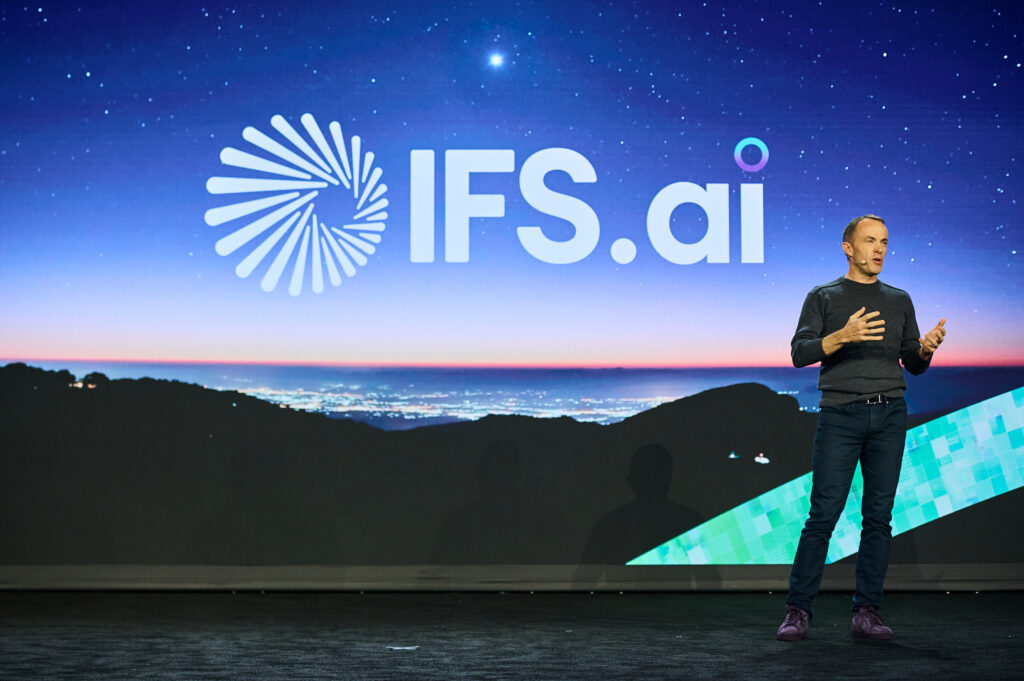What does this mean for SME ERP customers?
Acumatica is the US-based cloud-native ERP vendor that has set its sights on a big slice of the UK market that is currently occupied by Sage. Acumatica is from the same stable as IFS, being controlled by EQT – the Swedish private equity player – although the two vendors operate as independent organisations and service different ends of the market.
Acumatica was founded in 2008 as a cloud-only ERP solution. It has about 6,000 customers although the majority are based in North America. The move into the UK market is a big step for this modest-sized company but they have teamed-up with Pinnacle – an established IT and systems consultancy – and this will give them a great springboard, not least as Pinnacle is also a long-time Sage partner and that’s a segment Acumatica will be aggressively targeting.

When we interviewed Jon Roskill, CEO at Acumatica, on ERP Today Live! the session was entitled; ‘Does the world need another mid-market ERP vendor?’ There is already a dozen or more solutions that SMEs can choose from so it was hard to see at first why there was a need for another similar solution. Roskill was keen to point out that he doesn’t think there are other ‘similar solutions’ and the Acumatica product is in a different league to the offering from Sage.
“There are some huge gaps in the Sage offering that we intend to fill. A significant number of customers in the UK have a big manufacturing, distribution or eCommerce requirement and Sage can’t service that in the cloud”, said Roskill. “Intacct was meant to come with a distribution component but it doesn’t and we’ve seen a big switch in the US where Sage partners have turned to us for a modern cloud solution for their customers. We are partnering with Pinnacle in the UK and we expect the same experience here as we had in the US.”
ERP Today spoke to James Spencer, MD at Pinnacle, to find out why the long-standing Sage partner had chosen to team-up with Acumatica and asked, ‘What’s wrong with Sage and why Acumatica?’
Spencer said: “We have over 1,200 customers and we have built up a business over 30 years partnering with Sage. Most of those customers are on-premise – some are in the cloud or hybrid cloud, but most are traditional client-server customers. We wanted to break into the true-cloud ERP space and we felt that we needed to go out and find a broad ERP product that could give our customers the agility and innovation they need. Looking at the existing ERP providers, they didn’t really excite us. We felt that our customers needed a solution that’s fast to implement and comes with innovation out of the box. Acumatica really excited us and we are looking forward to bringing the product to UK customers.”

How is Acumatica different?
Firstly, Acumatica is a genuine cloud ERP solution. It’s not a retooled legacy suite that provides some cloud capability. It was written as SaaS from the start and it is architected on a modern cloud-native platform that allows easy integrations with other tools and services. Its UI is clean and user friendly and provides a browser or mobile experience for users on the move or working from home.
It also separates itself from the competition in a number of unique ways. Vendor differentiation is a thorny topic; speak to most ERP providers and they will reel-off a list of facts and characteristics that they believe makes them special. They sound compelling until you realise that virtually every vendor tells you the same thing meaning their differentiations are nothing more than the minimum that customers should be able to expect from any ERP provider. Acumatica takes a different approach to separating themselves from the competition by focussing less on features and functions and more on things like their customer bill of rights, their licensing and pricing agreements, data ownership policies and their commitment to customer success.
Roskill said: “Around 80 percent of UK businesses are running some sort of legacy accounting or ERP solution and almost 100 percent are running with companies that have a long history of bad customer care and a general disregard for whether the customer is seeing benefits out of the products. Acumatica treats its customers differently and provides customers with a different standard of service.”
Watch the full interview at stg-erptoday3-staging.kinsta.cloud/live
What do Acumatica customers say?
There’s really only one way to determine how much credibility to put behind vendor narrative – speak to their customers. Analyst reviews, NPS scores and even editorials in trade press can contribute to building a picture – but, having direct access to a customer and being able to ask them whatever you want is still the only true test. So that’s what we did.
ERP Today spoke to Chris Drake, COO at Smartnumbers – a UK organisation that provides voice-network security solutions to the likes of UK Ministry of Defence, the NHS and a host of government and public sector organisations. As far as customer testimonials go it couldn’t have been more emphatic.
Chris, Acumatica isn’t very well known in the UK yet, how did you end up selecting it as the right ERP for your organisation?
CD “We did thorough assessments on six well-known vendors and Acumatica was somewhat of a wild card on that list.”
What were your primary requirements for a new ERP solution?
CD “The leading requirement for us was user experience. Classical ERP systems don’t have a great reputation for having good user experience, but with Acumatica we found it to be very intuitive, very configurable, we could mould it around how we wanted the users to work, how our business processes work and that’s across the board.
What else appealed to you about Acumatica’s model?
CD “We’ve got this culture of collaboration and wanting things to be accessible and teams to work together. The licensing model was unique and something that was going to support us in in those goals. Also, the open design that Acumatica has allowed us to move the data in and out really easily. The second big factor was that Acumatica offered a true cloud SaaS model – for me as a technology person, I appreciate that it’s been built in a web-native technology. Whereas with other providers that we looked at, there’s a sort of pseudo cloud model that relies on remote sessions, or it was clear that they’d lifted something and transplanted it into the cloud.”
How easy was Acumatica to implement?
CD “The initial implementation took about 12 weeks and a lot of that was trying to wrangle data out of pre-existing legacy systems. We had a really great experience even though we implemented it in lockdown and that was a real testament to their model.”
Can you see where it’s actually delivering value?
CD “It’s exceeded our expectations. In fact, some of the numbers we’ve got are slightly embarrassing really, because in terms of measurable time savings, up to 90 percent for some processes that we were doing. And the direct cost savings have been excellent – we’re probably going to reach 80 percent or more direct cost saving. That’s great, but there’s some immeasurable benefits that we’re really feeling as well. That removal of the historic distraction the overhead of what we had before, enabling our people to work on more valuable strategic activities has been really important.”
Acumatica is trying to get a foothold in the UK, would you recommend them to other potential customers?
CD “Absolutely. Acumatica is kind of this golden thread that runs through our business and supports us culturally as well. When we talk to them, we have this feeling like we’re their number one customer, and hopefully that continues as they grow – but even to the point where Jon, the CEO, speaks to us directly from time to time to check in and see how we’re doing. It’s a great business and I certainly wish them all the best.”





